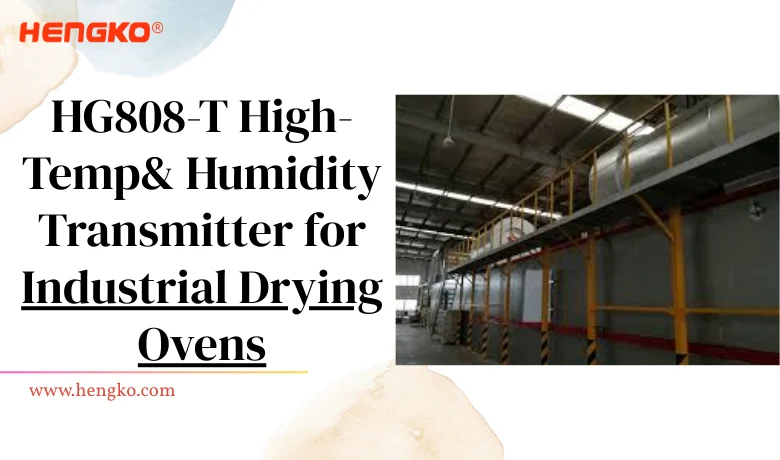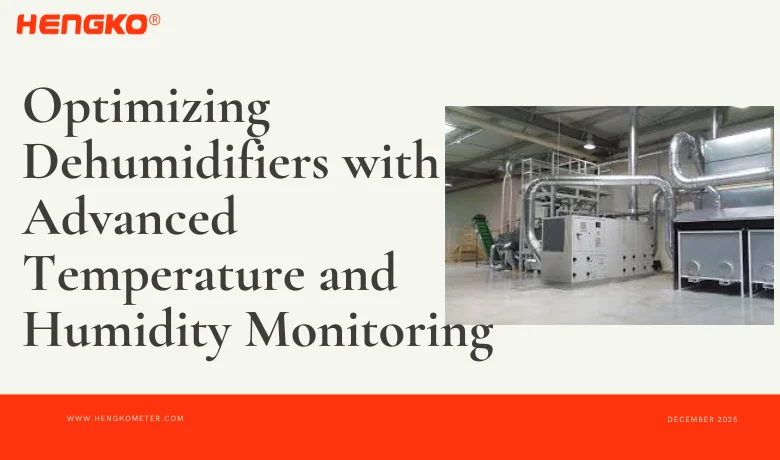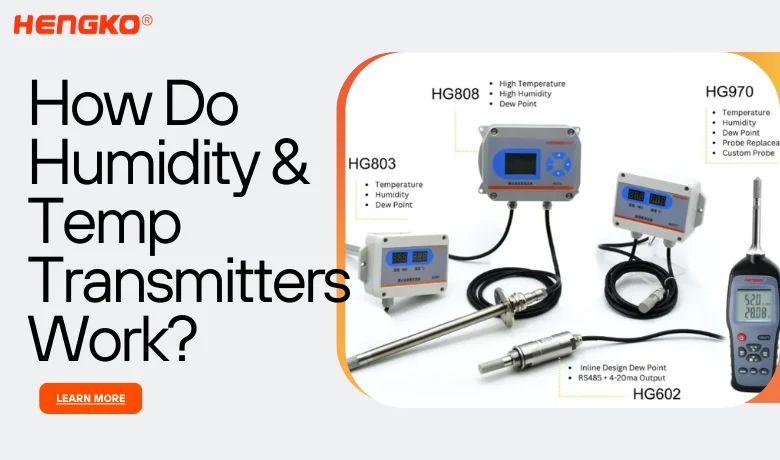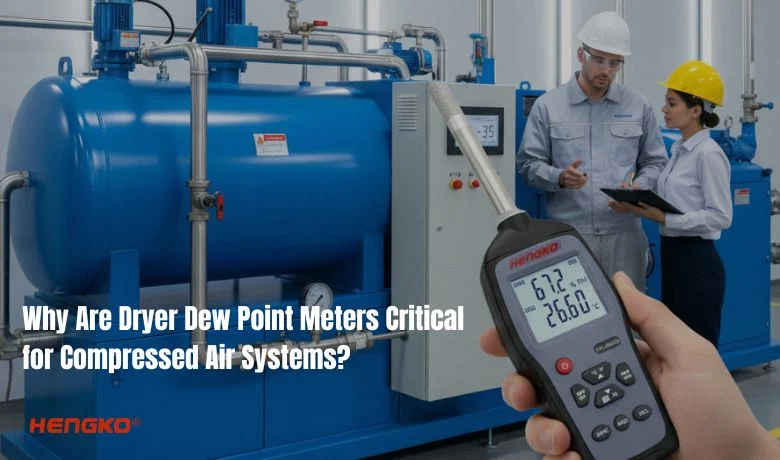Εισαγωγή
In the world of industrial sensors, temperature and humidity transmitters play a critical role in monitoring and controlling environmental conditions. Among the various signal output options available, the 4-20mA current loop stands out as the most widely used and trusted method.
But why is this the case? In this article, we’ll explore the reasons behind the dominance of 4-20mA in temperature and humidity transmitters, compare it with other signal outputs, and explain why it might be the perfect choice for your application.
What is a 4-20mA Signal Output?
The 4-20mA signal is an analog current loop widely used in industrial instrumentation. It works by transmitting a current signal that varies between 4mA (representing the minimum value, e.g., 0% humidity or the lowest temperature) and 20mA (representing the maximum value, e.g., 100% humidity or the highest temperature).
This range is chosen because it allows for easy detection of faults: a current below 4mA or above 20mA indicates a problem, such as a broken wire or sensor failure.
Γιατί το 4-20mA είναι η πιο δημοφιλής έξοδος σήματος;
As we know, 4-20mA is widely used across industries, but do you really understand why it’s preferred over RS485 and other output options? There must be several key advantages that make it the top choice. Let’s explore them one by one.
-Long-Distance Transmission
One of the biggest advantages of the 4-20mA signal is its ability to transmit data over long distances without significant signal degradation.
Unlike voltage-based signals (e.g., 0-5V or 0-10V), which are susceptible to voltage drops over long cables, current signals remain stable even over hundreds of meters.
This makes 4-20mA ideal for large industrial facilities where sensors are located far from control systems.
-Noise Immunity
Industrial environments are often filled with electrical noise from motors, pumps, and other equipment.
The 4-20mA signal is highly resistant to electromagnetic interference (EMI), ensuring accurate and reliable data transmission even in noisy conditions.
-Simple and Robust
The 4-20mA signal is easy to implement and requires minimal additional circuitry.
It is also highly reliable, with fewer components prone to failure compared to more complex digital communication protocols.
-Live Zero (4mA Baseline)
Unlike 0-5V or 0-10V signals, which have a true zero point, the 4-20mA signal uses a “live zero” (4mA) to represent the minimum value.
This allows the system to distinguish between a true zero reading and a fault condition (e.g., a broken wire, which would result in 0mA).
-Wide Industry Adoption
The 4-20mA standard has been widely adopted across industries, making it a universal choice for sensor integration.
This means that temperature and humidity transmitters with 4-20mA output can easily interface with existing control systems, PLCs, and data acquisition devices.
Comparison with Other Signal Outputs
To understand why 4-20mA is the preferred choice, let’s compare it with other common signal outputs:
●0-5V or 0-10V Voltage Signals
Pros: Simple to implement, low cost, and suitable for short-distance applications.
Cons: Susceptible to voltage drops over long distances, more prone to electrical noise, and unable to detect faults (e.g., a broken wire results in 0V, which could be misinterpreted as a valid reading).
Best For: Short-range, low-cost applications where noise and distance are not significant concerns.
●RS485 Digital Communication
Pros: Supports long-distance communication, allows multiple devices on a single bus, and can transmit complex data (e.g., multiple parameters or diagnostic information).
Cons: More complex to implement, requires additional protocol support (e.g., Modbus RTU), and may be overkill for simple applications.
Best For: Advanced systems requiring multi-point monitoring, remote control, or integration with IoT platforms.
●Wireless Signals (e.g., LoRa, Zigbee)
Pros: Eliminates the need for wiring, ideal for hard-to-reach locations, and supports remote monitoring.
Cons: Higher cost, potential signal interference, and reliance on battery power.
Best For: Applications where wiring is impractical or where mobility is required.
Signal Output Comparison Table You Can Easy to Check
| Signal Type | Pros | Cons | Best For |
|---|---|---|---|
| 0-5V or 0-10V Voltage Signals | Simple to implement, low cost, suitable for short-distance applications. | Susceptible to voltage drops over long distances, prone to electrical noise, cannot detect faults. | Short-range, low-cost applications where noise and distance are not significant concerns. |
| RS485 Digital Communication | Supports long-distance communication, allows multiple devices on a single bus, transmits complex data. | More complex to implement, requires additional protocol support, may be overkill for simple applications. | Advanced systems requiring multi-point monitoring, remote control, or IoT integration. |
| Wireless Signals (e.g., LoRa, Zigbee) | Eliminates wiring, ideal for hard-to-reach locations, supports remote monitoring. | Higher cost, potential signal interference, relies on battery power. | Applications where wiring is impractical or mobility is required. |
Why 4-20mA is Ideal for Temperature and Humidity Transmitters
-Reliability in Harsh Environments
Temperature and humidity transmitters are often used in challenging environments, such as industrial plants, greenhouses, and HVAC systems. The 4-20mA signal’s noise immunity and long-distance capabilities make it a reliable choice for these applications.
-Easy Integration
Most industrial control systems and PLCs are designed to accept 4-20mA signals, making it easy to integrate temperature and humidity transmitters into existing infrastructure.
-Cost-Effectiveness
For many applications, the simplicity and robustness of 4-20mA make it a more cost-effective solution compared to digital or wireless alternatives.
-Scalability
While 4-20mA is typically used for single-point measurements, it can be combined with multiplexers or data loggers to create scalable monitoring systems.
Applications of 4-20mA Temperature and Humidity Transmitters
-HVAC Systems: Monitoring and controlling air quality in commercial buildings.
-Industrial Processes: Ensuring optimal conditions in manufacturing, food processing, and pharmaceutical facilities.
-Agriculture: Maintaining ideal environments in greenhouses and storage facilities.
-Data Centers: Preventing equipment damage by monitoring humidity levels.
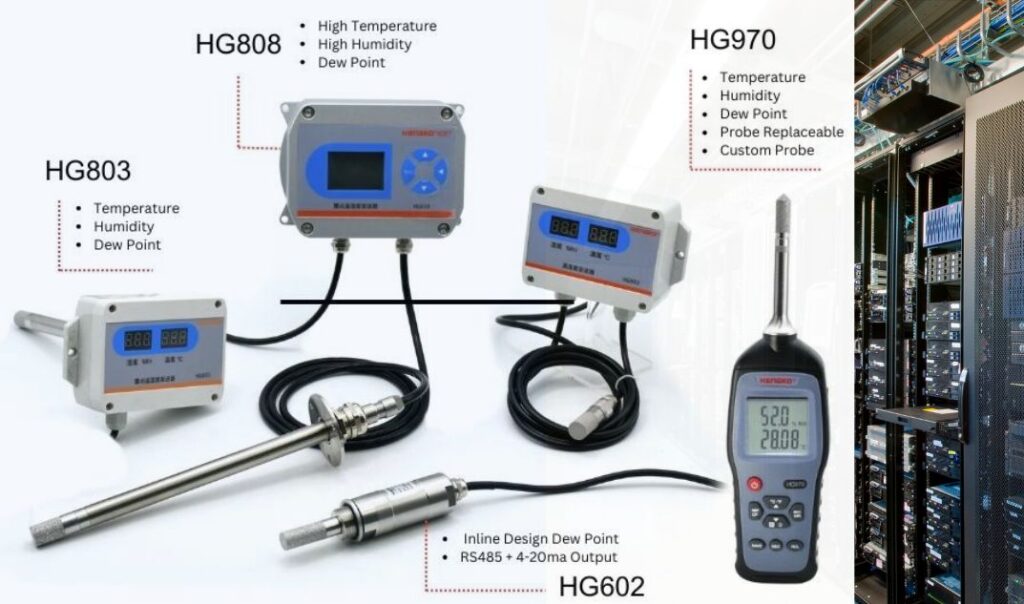
HENGKO Versatile Temperature and Humidity Transmitters
At HENKGO, we understand that every application has unique requirements. That’s why our temperature and humidity transmitters are designed with four output options: RS485, 4-20mA, 0-5V, and 0-10V. This flexibility ensures that you can choose the best signal output for your specific needs, whether you’re working on a simple local monitoring system or a complex industrial network.
-RS485: Perfect for multi-point monitoring and integration with advanced control systems.
-4-20mA: Ideal for long-distance transmission and harsh industrial environments.
-0-5V/0-10V: Suitable for short-range, cost-effective applications.
Our transmitters are built to deliver high accuracy, reliability, and ease of integration, making them the perfect choice for a wide range of industries. With robust construction and advanced sensing technology, they perform flawlessly in even the most demanding conditions.
Συμπέρασμα
The 4-20mA signal output has stood the test of time as the most widely used method for transmitting sensor data, and for good reason. Its combination of reliability, noise immunity, long-distance capabilities, and ease of integration makes it the ideal choice for temperature and humidity transmitters in a wide range of applications.
At HENGKO, we specialize in high-quality temperature and humidity transmitters with 4-20mA output, designed to meet the demands of even the most challenging environments. Whether you’re monitoring a small room or an entire industrial facility, our sensors provide the accuracy and reliability you need.
Ready to upgrade your monitoring system? Contact us at sales@hegnkometer.com today to learn more about ou temperature and humidity transmitters and find the perfect solution for your needs!



